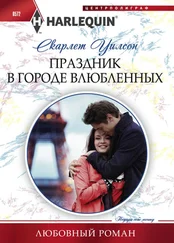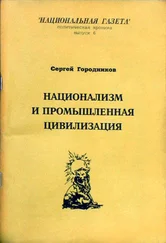Alexis de Tocqueville, Journeys to England Ireland (NY, 2003), p. 106; Frederika Bremmer, England in 1851; or, sketches of a tour to England (Boulogne, 1853), p. 15.
Frederika Bremmer, The Homes of the New World: impressions of America, 2 vols. (NY, 1858), Vol. I, p. 605.
Isabella Bird, The Englishwoman in America (London, 1856), p. 156; Paul Bourget, Outre-Mer: impressions of America (London, 1895), p. 117.
De Tocqueville, p. 108.
Donald L. Miller, City of the Century: the epic of Chicago and the making of America (NY, 1996), p. 217.
Frederic Trautmann, ‘Arthur Holitischer’s Chicago: a German traveler’s view of an American city’, Chicago History , 12:2 (Summer 1983), 42; Miller, p. 493; Simon Gunn, ‘The Middle Class, Modernity and the Provincial City: Manchester c .1840–80’, in Alan Kidd and David Nicholls (eds.), Gender, Civic Culture and Consumerism: middle-class identity in Britain 1800–1940 (Manchester, 1999), pp. 112–13ff.
Miller, pp. 301ff.
Friedrich Engels, The Condition of the Working Class in England (London, 1958), pp. 61, 63, 64.
Дословный перевод Angel Meadow .
M. Leon Faucher, Manchester in 1844; its present condition and future prospects (Manchester, 1844), pp. 67–8; John M. Werly, ‘The Irish in Manchester, 1832–49’, Irish Historical Studies , 18:71 (Mar. 1973), 348.
Miller, p. 123.
Ibid., p. 136; Josiah Seymour Currey, Chicago: its history and builders (Chicago 1912), Vol. III, p. 177.
Bubbly ( англ .) – пузыристый, шипучий.
Miller, p. 122.
Gunn, p. 118.
Miller, pp. 273ff.
Angus Bethune Reach, Manchester and the Textile Districts in 1849 (Rossendale, 1972), p. 61.
Andrew Davies, The Gangs of Manchester: the story of scuttlers, Britain’s first youth cult (Preston, 2008), chapter 2.
Ibid.; Jenny Birchall, ‘“The carnival revels of Manchester’s vagabonds”: young working-class women and monkey parades in the 1870s’, Women’s History Review, 15 (2006), 229–52.
Davies, passim; Mervyn Busteed, The Irish in Manchester, c.1750–1921: resistance, adaptation and identity (Manchester, 2016), chapter 2.
M. A. Busteed and R. I. Hodgson, ‘Irish Migrant Responses to Urban Life in Early Nineteenth-Century Manchester’, The Geographical Journal, 162:2 (July 1996), 150.
Richard Junger, Becoming the Second City: Chicago’s news media, 1833–1898 (Chicago, 2010), p. 22.
Miller, p. 137; Frederic M. Thrasher, The Gang: a study of 1,313 gangs in Chicago (Chicago, 1936).
Richard C. Lindberg, Gangland Chicago: criminality and lawlessness in the Windy City (Lanham, 2016), p. 22.
James Phillips Kay, The Moral and Physical Condition of the Working Classes Employed in the Cotton Manufacture in Manchester (London, 1832) p. 72.
Engels, p. 137.
2,1 кв. километра.
Zubair Ahmed, ‘Bombay’s Billion Dollar Slum’, http://news.bbc.co.uk/1/hi/business/3487110.stm.
Janice E. Perlman, ‘The Metamorphosis of Marginality: four generations in the favelas of Rio de Janeiro’, Annals of the American Academy of Political and Social Science , 606 (July 2006), 167; Sanni Yaya, Olalekan A. Uthman, Friday Okonofua and Ghose Bishwajit, ‘Decomposing the Rural-Urban Gap in the Factors of Under-Five Mortality Rate in Sub-Saharan Africa? Evidence from 35 countries’, BMC Public Health , 19 (May 2019); Abhijit V. Banerjee and Esther Duflo, ‘The Economic Lives of the Poor’, Journal of Economic Perspectives , 21:1 (Winter, 2007), table 9; The World Bank, ‘Employment in Agriculture’ https://data.worldbank.org/indicator/SL.AGR.EMPL.ZS.
Hippolyte Taine, Notes on England (London, 1957), pp. 290ff.
John Burnett (ed.), Destiny Obscure: autobiographies of childhood, education and family from the 1820s to the 1920s (London, 1982), p. 107; Frank Norris, The Pit: a story of Chicago (NY, 1920), pp. 149ff.
Miller, p. 277.
Emma Griffin, Liberty’s Dawn: a people’s history of the industrial revolution (New Haven, 2013), pp. 240ff.
Faucher, p. 52.
John B. Jentz, ‘The 48ers and the Politics of the German Labor Movement in Chicago during the Civil War Era; community formation and the rise of a labor press’, in Elliot Shore, Ken Fones-Wolf, James P. Danky (eds.), The German-American Radical Press: the shaping of a left political culture, 1850–1940 (Chicago, 1992), pp. 49ff.
City of Chicago, Department of Zoning and Planning, ‘Vorwaerts Turner Hall, 2421 W. Roosevelt Rd: final landmark recommendation adopted by the Commission on Chicago Landmarks, September 3 2009’, https://www.chicago.gov/content/dam/city/depts/zlup/Historic_Preservation/Publications/Vorwaerts_Turner_Hall.pdf.
Royal L. Melendy, ‘The Saloon in Chicago (II)’, American Journal of Sociology, 6:4 (January 1901), 433–4.
Eric L Hirsch, Urban Revolt: ethnic politics in the nineteenth-century Chicago labor movement (Berkeley, Cal., 1990), p. 163.
Sandra Burman (ed.), Fit Work for Women (Abingdon, 2013), pp. 100ff.
Gertrud Pfister, ‘The Role of German Turners in American Physical Education’, in Pfister (ed.), Gymnastics, a transatlantic movement (Abingdon, 2011); Gerald Gems ‘The German Turners and the Taming of Radicalism in Chicago’, in Pfister (ed.); Gerald Gems, Windy City Wars: labor, leisure, and sport in the making of Chicago (Lanham, 1997).
Dagmar Kift, The Victorian Music Hall: culture, class and conflict, trans. Roy Kift (Cambridge, 1996), p. 1.
Harvey Warren Zorbaugh, The Gold Coast and the Slum: a sociological study of Chicago’s Near North Side (Chicago, 1929), p. 3.
Caroline Wyatt, ‘“Paris Syndrome” strikes Japanese’, BBC News, 20/12/2006, http://news.bbc.co.uk/1/hi/6197921.stm; Katada Tamami, ‘Reflections on a case of Paris syndrome’, Journal of the Nissei Hospital , 26:2 (1998), 127–32.
Sigmund Freud, Life and Work: the young Freud, 1885–1900, ed. Ernest Jones (London, 1953), p. 200.
Emma Willard, Journals and Letters from France and Great Britain (NY, 1833), p. 30.
David P. Jordan, Transforming Paris: the life and labors of Baron Haussmann (NY, 1995), pp. 92–3; Victoria E. Thompson, ‘Telling “Spatial Stories”: urban space and bourgeois identity in nineteenth-century Paris’, Journal of Modern History , 75:3 (September 2003), 540.
Читать дальше
Конец ознакомительного отрывка
Купить книгу











